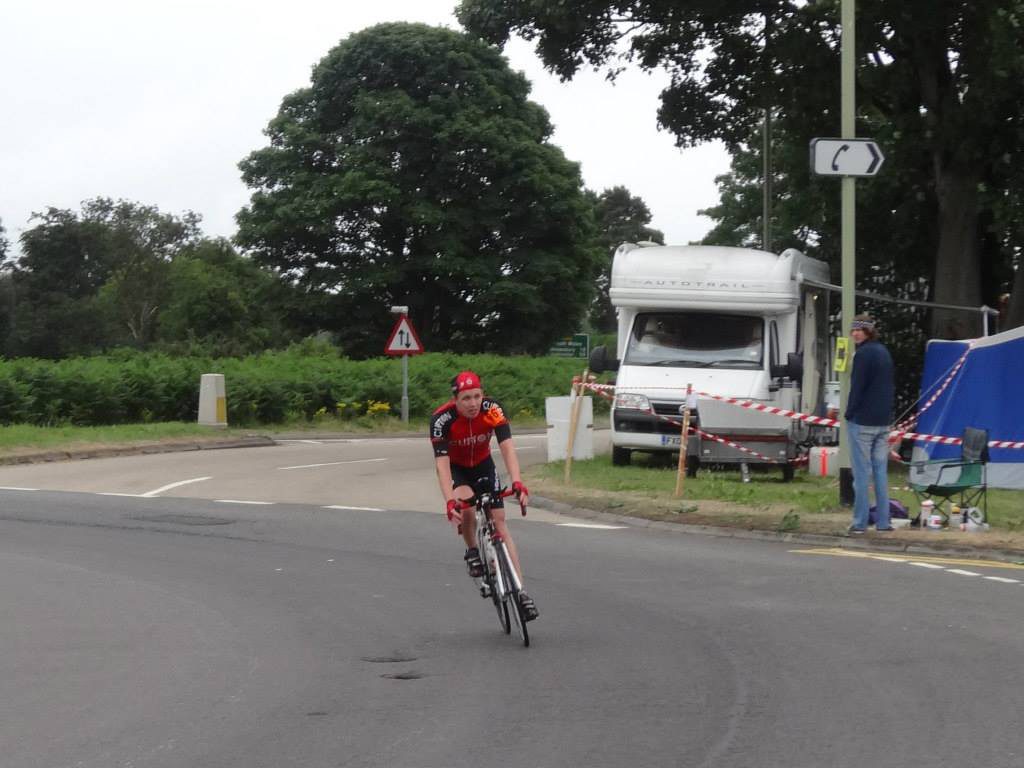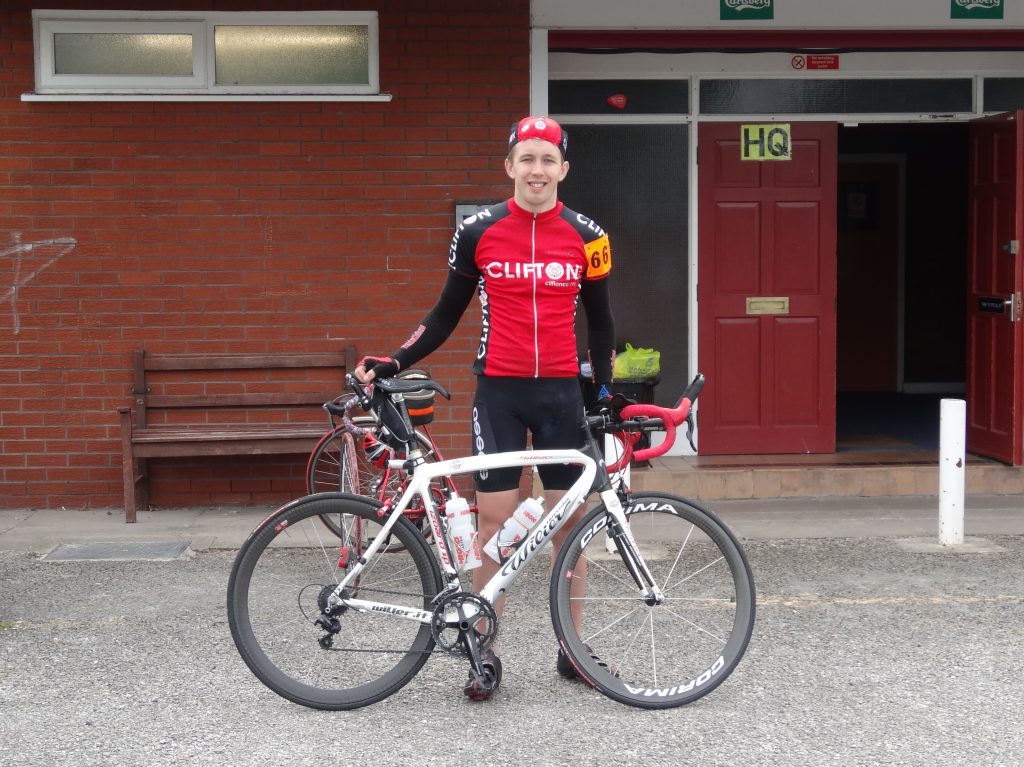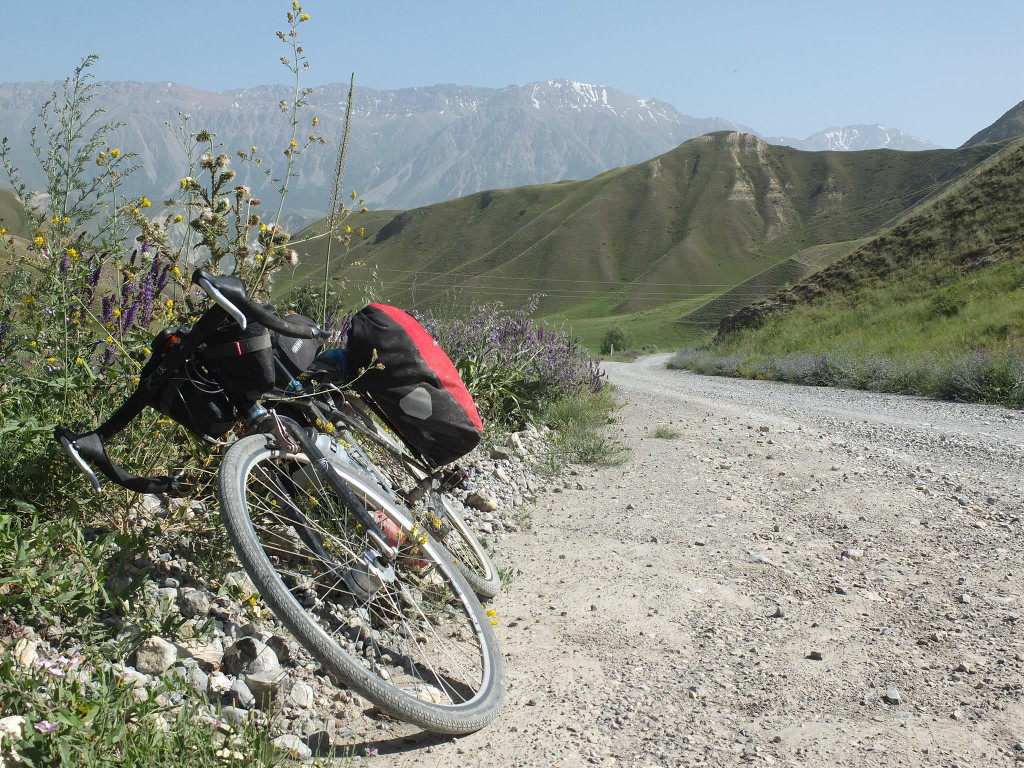“STOP RACING!” The marshal’s hand stuck out towards me like a policeman. I pulled up next to the timekeeper and collapsed over the bars, panting back the previous twenty four hours of effort. Once my head had stopped swimming I looked down at the speedo: 392 miles. Damn. This was 2011 and by the time the final results came out, my distance would be revised down to 390.53 miles – so close and yet so far from the 400 I’d hardly dared to dream about: it seemed I’d been right after all. Now there was nothing for it: I’d have to repeat the 24, or those 9.47 miles would haunt me until the day I hung up my wheels.

It took two years before I felt ready to try for such an ambitious target and I knew that in order to hit it, everything would have to go right – which meant I needed to finally settle my scores with the 6P principle. This is “Proper Planning Prevents Piddling Poor Performance” and I’d had a stormy relationship with 6P over the years: there was the 10 mile TT where I got lost, the 100 where I started late with both a broken speedo and tri-bars that were held together with a bent nail, and the start of season circuit race where I dusted off my summer bike the previous week, only to drop my chain on the first lap. This was serious as the 24 is basically the national 6P championships, run over 6 months with a bike ride tacked on the end. What’s more, the 24 is such a big beast that it’s not worth doing if you don’t do it properly. The long winter nights were spent busily putting together my battle plan; scouring my mind for memories of just how much I’d eaten on previous long TTs and audaxes, scouring the internet for reports of past champions, and building up stocks of extra-powerful lights, spare batteries and the most comfortable saddle I could get my hands on … or should that be ‘get my bum on’?
You’re allowed to stop for as much time as you like in the 24, with the obvious proviso that you stop, you lose. I’d spent well over two hours off the bike in 2011, which was far too much. There had been an embarrassing incident where I’d ended up 40 miles from my lights as night fell, and had to hole up in the HQ until they could be driven to me: that was one mistake I definitely wouldn’t make again. Apart from avoiding the obvious organizational cock-ups, time off the bike is something you can train: while the top riders would spend maybe a minute stopped, that would have been counter-productive in my case as I’d have slowed to a crawl. I planned to take two 20 minute breaks for hot food, one at the beginning of the night and one at the end, and to keep my total downtime to within an hour. I’d shamelessly stolen this plan from my clubmate Rob, who’d done 427 miles a decade before. Rob also became my unwitting prey: 430 became my target, and my plans were laid specifically to beat him.
My support team comprised my long-suffering dad plus a friend Richy, who was staying free in my spare room and was thus a prime target for a bit of emotional blackmail. Once enlisted, they were subjected to training: handing up bottles on the move, fitting lights to my bike and tracking me round the course. This involved writing a schedule: a plan of how fast I’d go, when I’d stop and when I’d likely be transferred between the day and night circuits. The schedule isn’t just useful for getting support, it’s essential for timing your effort. You want to be falling off the bike on the finish line, but not before. Roy Cromack, the first man over 500 miles (and incidentally another clubmate) got this almost perfect: he fainted in the road and fell off with 10 seconds to go. He’d been convinced that an evenly-paced ride would do the trick, so he “drew a curved base on a 4:27 ‘100’ and a 258 ’12’ and aimed for 501 miles”. I aimed for something similar if slower: a 20mph start, a 230 mile ’12’, then 200 miles to cover in the second half. That was a more evenly-paced race than most people would ride, but then so was Cromack’s; if it had worked for him, surely it would work for me?
Not only is the 24 the grand prix of pacing strategy, it also requires some rather more esoteric skills – no, I’m not saying that I’ve learned how to wee off the bike (I haven’t, though I probably should.) I’m talking about the art of digesting stuff while still on the bike. I know of someone whose training was to eat breakfast on her turbo trainer, which must count as one of the more niche turbo sessions out there. On top of that, there’s the art of simply staying on the bike, of keeping yourself comfortable and of minimising your stoppage time; if I needed several things at a stop, I’d work out and memorise a list beforehand, then squeal to a halt and bark “Right, I need a banana, Sudocrem, my rear lights, a Lucozade and arm warmers”, all the while munching an energy bar in what was precious static stomach time.
The food itself was a big tactical plan. To save time, I’d have food handed up on the bike. Drink would alternate between Lucozade and water, and all bottles would have an item of food attached: either a banana, a gel or one of a selection of flapjacks and bars. If I only took on one bottle, I’d also take a ‘rice cream’: an ice cream cone filled with rice pudding. Packed away in the box were some emergency supplies: malt loaf, ‘Obree special’ marmalade sandwiches and – in case of total digestive shutdown – palate-cleansing apples.
The hard part, as always, was the training. How do you train for a 24? Back in 2011 I’d been qualifying for Paris-Brest-Paris, so I’d done millions of long Audax kilometres, but nothing particularly fast. This time involved fewer, shorter, faster miles, with a few long rides mixed in: a 300km night ride to Wales to test my lights, a 600km Audax to test my position on the bike, and a 100 mile TT a month before the big one. That was the theory anyway. The reality was that the wheels sort of dropped of, as pressure of work turned “fewer faster miles” into “many, many fewer, slightly faster miles, plus lots of late nights, junk food and vending machine dinners”. As I’ve said, the 24 really isn’t worth it if you don’t do it properly, so the 100 was crucial to giving me confidence: I defied my unlucky race number 13 to win the handicap prize by a cool three seconds. Even so, I was fantastically nervous about whether I’d embarrass myself on the 24. Anything over 400 would do, but I was worried about failing yet again at even this measly target – so worried that had I not talked a friend into entering alongside me, I’d probably have dropped out and left it for another year.
The week before the race, temperatures skyrocketed and I nearly dropped out anyway: I don’t cope well with heat. Thankfully, Saturday dawned cloudy and cool. There was a bit of wind and a threat of rain later, but I couldn’t have cared less, just so long as the heat was gone. The nerves on the start line were still awful though – was I going to put myself through all this pain, just to embarrass myself? “Ride hard in the night, that’s the secret” advised a spectator as I clipped in, “Oh, and ride hard in the day too.” With that, I was away. The nerves evaporated as all the months of planning and preparation came to an abrupt end on the timekeeper’s countdown. All I had to do now was to press the big red button.
The Mersey Roads course runs on a mixture of A, B and minor roads between Wrexham and Shrewsbury. It starts by going up a hill (more on that later) and then heads south to the Raven Cafe at Prees Heath. The cafe forms a major feature in the Mersey each year, with riders stumbling in and out at all times of the day and night, asking for instant beans on toast, catching catnaps on the tables and massaging ibuprofen gel into each other’s knees. The truck stop also becomes the main support base, as it forms part of both main circuits. Cars, camper vans and spare bikes litter the car park, with dozens of supporters lining up by the roundabout, each dressed in some supposedly distinctive reflective garb – or occasionally comedy superhero outfits – the better to help their rider recognise them amidst the rest of the annual carnival. All that was several hours in the future, so for the present I settled down into a comfortable pace just above 20mph and concentrated on heading south.
You might imagine that boredom would be a challenge in a 24, but nothing could be further from the truth. The real challenge was keeping focussed all the time, to regulate my efforts. The 24, as I said earlier, is the grand prix of pacing, and that takes a lot of concentration. Near the start, I was pumped and had to focus on not running away with myself. As time ticked away, the prize grew nearer but the pushing grew harder and I grew tireder, so the challenge of keeping focus became ever greater

And so the night came. My lights were complemented by a luminous watch I’d stuck to my stem, so I could keep some sort of pacing overnight. For the five or six hours that the darkness lasted, I could pace myself perfectly adequately by timing myself round the night circuit, apart from that it was comforting to be away from the numbers – in fact, away from everything, cocooned in my own little world of light and effort. Occasionally I’d come across another ship in the sea of darkness and have a chat, or just wish them “dig in”. The long distance world is not a large one and I knew a lot of the people from the previous 24 or from PBP, a 12 or an Audax event. Some of the old timers gave the most inspirational stories: there was Peter Yates of Otley CC, the octogenarian who won the vets event with 143 miles on standard, or George Berwick, who still holds some place to place records and who was riding his 40th 24 when Rob rode – now he was up to 53, riding on the back of a tandem due to failing eyesight. He doesn’t get as far these days but still, go George!
Somewhere in the night, the 12 hour mark passed, and a brief passage from unlit road into street-light showed that I had 228 miles on the clock. I was almost on schedule; had I dug too deep or could I keep it up? Only time would tell. The signs were good though: my legs felt normal, my gut felt normal, my bum felt okay and my neck felt normal. One of the 24-specific aspects of my training had been to ride many miles in the tri-bars, fine tuning my position and making sure I could hold it for hour after hour – now it was all paying off. I could stay in my aero (well, aero-ish) tuck and continue to plug away steadily, diving into the night, emerging to the orange lights of Prees, picking up a bottle and diving back into the night again.

My supporters performed flawlessly in all this time, with one exception. There’s a classic (sadly blurred) photo of the time I rounded Prees to find my dad holding a camera – my face bears a horrified expression that reads “Why the %#£! are you pointing that thing at me, I want food!” Apparently Richy had that round the corner … oh no he didn’t, he had one of my emergency apples. Why on earth they thought this was suitable calorific food … perhaps it was because they’d been up all night. Oh well, I had a bit of food left in my pockets, so I’d survive. Some riders do this event self-supported, with nothing more than a couple of supply bags deposited around the route. At the other end, it’s becoming increasingly popular to do the 24 in a skinsuit. The reduced carrying capacity will make you totally reliant on your supporters, who you’ll need to trust to hand you the right food at the right time – as my apple incident had just highlighted. In the 24, the individual time trial really does become a team event.
It was about four hours from the finish that the messages started coming through: “This is really gonna hurt”. If you’ve ever done a 10 mile TT, you’ll know the point about two miles from the finish where you have to grit your teeth, wind everything up to the max and bear the pain as best you can – this was just like that, except in slow motion. If my tired brain was struggling to believe the ‘step it up a gear’ messages though, it was struggling even more to comprehend what the light of the new day showed me: not only was I on for my dream target of 430 miles, I might – just might – be on for a mind-bendingly long 440. Higher gear: engaged!
For all the pain, I could at least start to focus on the end now: for most of the race I’d been focusing on the next lap but now I could start to think what it would be like to actually not be riding a bike (answer: blissful). For the present, my spirits were lifted when 24 hour record holder Andy Wilkinson and his wife Jill turned out to cheer people: it was quite something to hear my name called out by one of the top time triallists ever. I wonder what they thought when they saw me – I actually felt good at this point, but there’s a video from the finishing circuit on Youtube and I look like a complete wreck, barely able to keep my head up or to hold a straight line.
Half an hour or so from the end, you can probably work out where you’re going to finish. There are timekeepers every couple of miles and you’re meant to ride to the first one after your time runs out. For me the answer was: on top of the circuit’s main hill! I suppose it was poetic that my season would end with a hillclimb, but I wasn’t in a very poetic mood at that point. Here it came: past the HQ to cheers from the riders who’d already finished, up the hill, lift the effort for one last time … and over the line chalked on the road, to collapse in the dreamed-of grass and soak up the sun. Slowly, the blood cleared from my vision and I opened my eyes to see a beautiful sight … I’d finished next to a pub.
One pint later, and after one very stiff ride down the hill to the HQ, I finally got my official result: 442.92 miles and 15th place. That was crazy, I could scarcely believe it! To think that I’d almost DNS’d … how on earth had I gone that far?
Well let’s see: I’d spent an hour off the bike, as planned. About half my improvement from last time had come from spending less time stopped, the rest had come from riding faster. It seems that the training strategy of ‘fewer, faster miles with a bit of long stuff mixed in’ really works, as does having a really good plan for the day. My pacing strategy had worked perfectly: I’d kept a lid on it for the first afternoon, pressed hard through the night and then lifted it for the final morning. I’d been able to stay on the tri-bars until the last 100 miles or so, and I’d never run out of food. In short, everything clicked to give a dream ride.
If you think the 24 sounds like racing by numbers, you’d be largely right: my clubmates who’d done one had been a maths teacher and two science PhDs. A 24 is a major campaign, it dominates your season and while it may not give the instantaneous thrill of winning a sprint, a successful attempt gives the slower-burning satisfaction of a plan well prepared and executed. Julius Caesar would have understood: “veni vidi vici”.
Oh and yes, before anyone asks, my bum hurt too.

